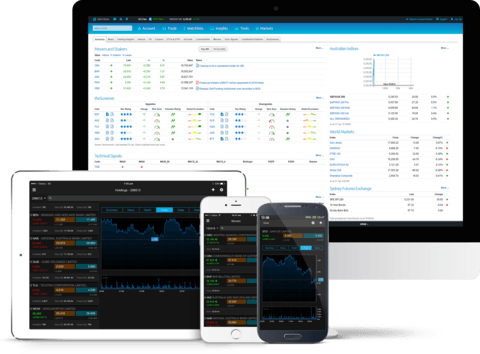The Rise of Retail Investors: CFD Trading Trends

In recent years, the landscape of financial markets has been drastically altered by the influx of retail investors. Empowered by technology and access to information, individual traders are now playing a significant role in shaping market dynamics. One area where this impact is particularly pronounced is in Contract for Difference (CFD) trading. This article delves into the rise of retail investors and the CFD trading trends that are emerging as a result.
The Democratization of Trading
Historically, trading in financial markets has been dominated by institutional investors, hedge funds, and large financial institutions. However, the advent of online trading platforms and mobile apps has democratized access to the markets. Retail investors can now trade a wide range of assets, including stocks, commodities, and forex, from the comfort of their homes.
CFD trading has become especially popular among retail investors due to its flexibility and leverage. CFDs allow traders to speculate on the price movements of an asset without actually owning the asset. This means that traders can profit from both rising and falling markets, making CFDs a versatile tool for various trading strategies.
Why Retail Investors Are Drawn to CFD Trading
Leverage
One of the most attractive features of CFD trading for retail investors is leverage. By using leverage, traders can control a large position with a relatively small amount of capital. While this amplifies potential profits, it also increases the risk of significant losses. Therefore, leverage should be used with caution and a thorough understanding of the associated risks.
Accessibility
CFD trading platforms are designed to be user-friendly, making it easier for novice traders to enter the market. Many platforms offer educational resources, demo accounts, and customer support to help new traders get started. This accessibility has lowered the barrier to entry, allowing more individuals to participate in trading.
Variety of Assets
CFDs provide access to a wide range of markets, including equities, indices, commodities, and forex. This variety allows retail investors to diversify their portfolios and explore different trading opportunities. The ability to trade multiple asset classes from a single platform is a significant advantage for retail traders.
Emerging CFD Trading Trends Among Retail Investors
Increased Market Participation
The rise of retail investors has led to increased market participation, particularly in CFD trading. According to recent reports, the number of retail CFD accounts has surged, driven by factors such as market volatility and the availability of trading platforms. This trend shows no signs of slowing down as more individuals seek to capitalize on market opportunities.
Social Trading
Social trading is another trend gaining traction among retail CFD traders. Platforms like eToro allow users to follow and copy the trades of experienced traders. This collaborative approach enables novice traders to learn from experts and potentially improve their trading performance. Social trading also fosters a sense of community, making trading a more interactive and engaging experience.
Algorithmic Trading
Algorithmic trading, once the domain of institutional investors, is becoming increasingly popular among retail CFD traders. Many platforms now offer algorithmic trading tools that allow users to automate their trading strategies. By using algorithms, traders can execute trades based on predefined criteria, reducing the emotional aspect of trading and potentially improving outcomes.
The Future of Retail CFD Trading
As technology continues to evolve, the future of retail CFD trading looks promising. Innovations such as artificial intelligence (AI) and machine learning are expected to play a significant role in shaping the future of trading. These technologies can provide advanced analytics, predictive modeling, and personalized trading recommendations, enhancing the overall trading experience for retail investors.
Moreover, regulatory developments will also impact the CFD trading landscape. Regulators are increasingly focusing on protecting retail investors by implementing measures such as leverage limits and transparency requirements. These regulations aim to create a safer trading environment and ensure that retail investors are well-informed about the risks involved in CFD trading.
Conclusion
The rise of retail investors in CFD trading is a testament to the democratization of financial markets. With the advent of user-friendly trading platforms, educational resources, and innovative tools, more individuals are now able to participate in trading and potentially achieve their financial goals. As trends such as social trading and algorithmic trading continue to gain momentum, the future of retail CFD trading looks brighter than ever. However, it is essential for retail investors to approach CFD trading with caution, armed with knowledge and an understanding of the inherent risks.

